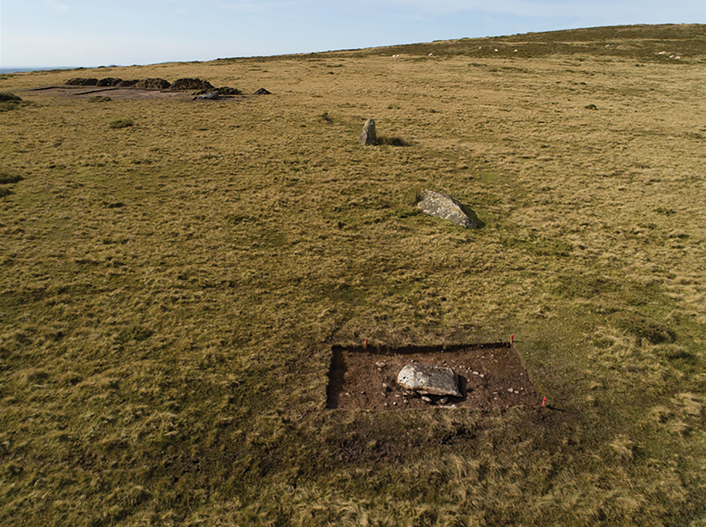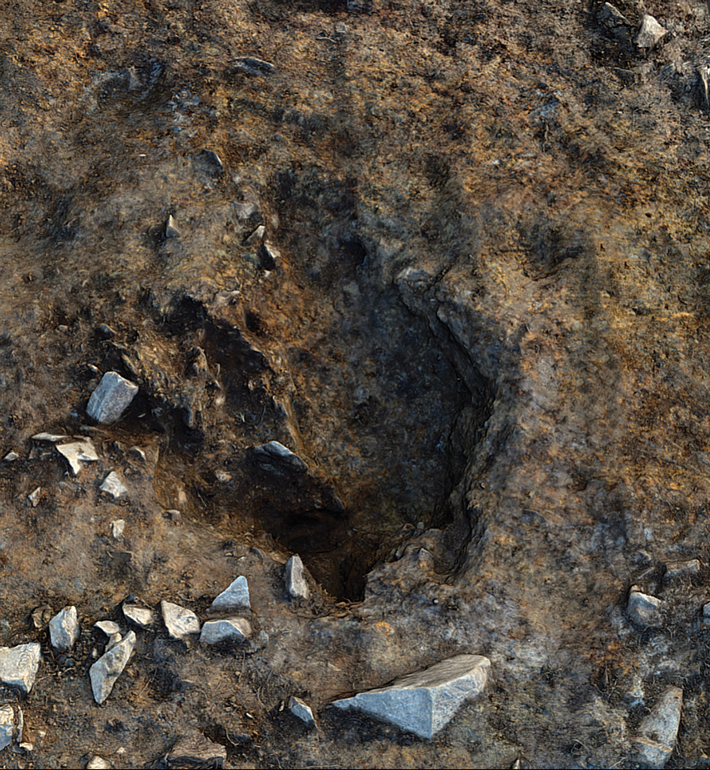A Welsh Ancestor
May/June 2021
 The arc of standing stones in western Wales known as Waun Mawn is fairly run-down, which is to be expected of a monument that is more than 5,000 years old. Weather and time, however, are not entirely to blame, according to Mike Parker Pearson of University College London. He believes that the builders of Stonehenge helped themselves to Waun Mawn’s bluestones as building materials for their own monument on England’s Salisbury Plain, some 180 miles to the southeast. (See “Quarrying Stonehenge.”) Excavations by Parker Pearson’s team have demonstrated that Waun Mawn was once a complete circle of stones. The excavators found a pit at the site that still bore the imprint of a missing stone’s pentagonal base. Its dimensions matched those of one of Stonehenge’s bluestones. Parker Pearson suggests that two of Waun Mawn’s largest stones formed an entryway that would have framed the sunrise during the weeks before and after the summer solstice. This important event was also marked at Stonehenge.
The arc of standing stones in western Wales known as Waun Mawn is fairly run-down, which is to be expected of a monument that is more than 5,000 years old. Weather and time, however, are not entirely to blame, according to Mike Parker Pearson of University College London. He believes that the builders of Stonehenge helped themselves to Waun Mawn’s bluestones as building materials for their own monument on England’s Salisbury Plain, some 180 miles to the southeast. (See “Quarrying Stonehenge.”) Excavations by Parker Pearson’s team have demonstrated that Waun Mawn was once a complete circle of stones. The excavators found a pit at the site that still bore the imprint of a missing stone’s pentagonal base. Its dimensions matched those of one of Stonehenge’s bluestones. Parker Pearson suggests that two of Waun Mawn’s largest stones formed an entryway that would have framed the sunrise during the weeks before and after the summer solstice. This important event was also marked at Stonehenge.
 Archaeoastronomer Clive Ruggles of the University of Leicester points out that the stones at Waun Mawn may have also been aligned with celestial objects other than the sun or even with points on the landscape. Those relationships, however, are difficult to detect because the land and the position of stars in the sky have both changed over the millennia. Ruggles suggests that the stones marking the solstice at both Waun Mawn and Stonehenge probably indicated roughly when specific ceremonies were supposed to take place, but acknowledges that the belief systems of the stone circle builders have been lost to time. Says Ruggles, “There’s astronomy in there, but it’s part of a much more complex cosmology.”
Archaeoastronomer Clive Ruggles of the University of Leicester points out that the stones at Waun Mawn may have also been aligned with celestial objects other than the sun or even with points on the landscape. Those relationships, however, are difficult to detect because the land and the position of stars in the sky have both changed over the millennia. Ruggles suggests that the stones marking the solstice at both Waun Mawn and Stonehenge probably indicated roughly when specific ceremonies were supposed to take place, but acknowledges that the belief systems of the stone circle builders have been lost to time. Says Ruggles, “There’s astronomy in there, but it’s part of a much more complex cosmology.”